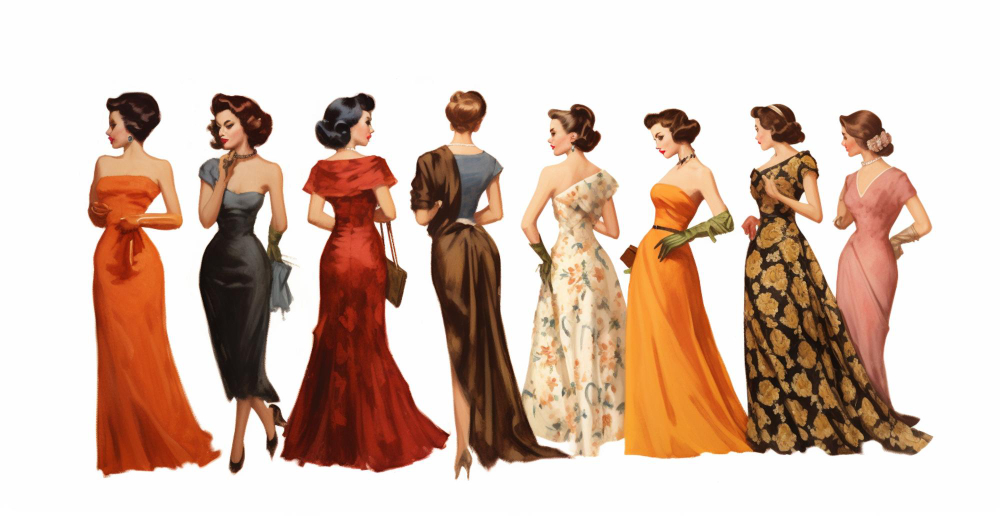· The Early Origins
· Functional Dresses in History
· Transformation into Decorative Attire
· Contemporary Dress Styles
· Conclusion
Introduction
Dresses have long been a symbol of femininity and style, serving as a canvas for self-expression and reflecting the societal norms and trends of different eras. Throughout history, women's dresses have transitioned from functional garments to decorative attire, highlighting the ever-changing roles and expectations placed on women. This article explores the early origins of women's dresses, their functional uses throughout history, the transformation into decorative garments, and the contemporary dress styles that shape our fashion landscape today.
The Early Origins
The history of women dresses dates back thousands of years. In ancient civilizations such as Egypt and Mesopotamia, women adorned themselves with draped garments made of linen or wool. These early prototypes of dresses were often loose-fitting and simple in design, providing ease of movement in everyday activities.
With the rise of civilizations, dresses began to take on more intricate forms. In ancient Greece, the chiton became popular, featuring a rectangular piece of fabric fastened at the shoulders and belted at the waist. This garment exemplified the transition towards clothing that accentuated the natural female form.
Functional Dresses in History
As societies developed, women's dresses started to serve practical purposes beyond mere coverage. In medieval Europe, for instance, dresses were designed to indicate a woman's social status and marital affiliation. The silhouette of the dress often included features like intricate embroidery, long trains, and tight corsetry.
During the Victorian era, the functional aspect of women's dresses took a different turn. Dresses became heavily structured with multiple layers of petticoats, hoop skirts, and bustles. These undergarments served to enhance the hourglass figure, emphasizing a tiny waist and a full skirt. Though restrictive, these dresses showcased a woman's wealth and adherence to societal norms.
Transformation into Decorative Attire
In the early 20th century, women's fashion underwent a significant transformation, marking a shift towards more comfortable and liberating styles. The suffragette movement in the late 19th and early 20th centuries played a crucial role in challenging the restrictive fashion of the time. As a result, dresses became shorter, looser, and less constricting.
The emergence of fashion designers like Coco Chanel and Elsa Schiaparelli further revolutionized women's dress styles. Chanel introduced the iconic little black dress in the 1920s, which became a symbol of chic simplicity and elegance. Schiaparelli, on the other hand, experimented with bold colors, unconventional materials, and avant-garde designs, pushing the boundaries of women's fashion.
Contemporary Dress Styles
Today, women's dresses come in a plethora of styles, reflecting the diverse fashion tastes and personal preferences of women worldwide. From maxi dresses to cocktail dresses, the options are endless.
One popular contemporary dress style is the A-line dress. This silhouette flares out from the waist, creating a flattering and timeless look. It can be paired with heels for a sophisticated occasion or dressed down with flats for a casual outing.
Another enduring trend is the wrap dress, which was popularized by designer Diane von Furstenberg in the 1970s. This versatile garment features a crossover front and a tie closure, accentuating the waistline and embracing the female figure. The wrap dress is celebrated for its ability to suit various body types and can be worn for both professional and social occasions.
Additionally, the shift dress maintains its popularity due to its simplicity and versatility. This loose-fitting garment hangs straight from the shoulders and often falls above the knee. It is a go-to choice for women who prioritize comfort without compromising style.
In recent years, sustainability has influenced dress styles. Ethical and eco-friendly fashion brands have emerged, offering dresses made from organic materials or through upcycling. These dresses not only contribute to a more sustainable fashion industry but also serve as a statement of conscious consumerism.
Conclusion
Women's dresses have come a long way, transitioning from functional garments to symbols of fashion and self-expression. From the ancient civilizations to today's diverse dress styles, dresses have evolved to meet the needs and desires of women throughout history. Whether functional or decorative, dresses continue to shape and reflect the ever-changing landscape of women's fashion, showcasing the power of clothing as a means of personal and cultural expression.
